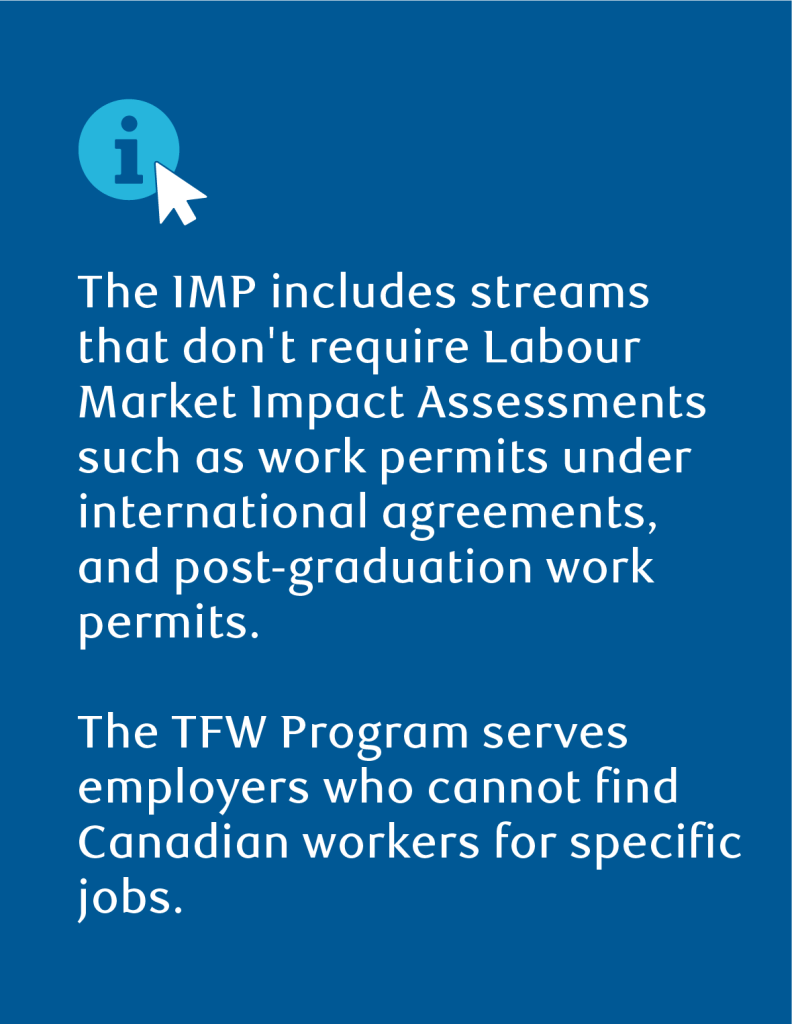
The Canadian federal government’s latest three-year immigration plan represents a far smaller shift in policy than last year’s overhaul.
The government is further reducing the number of temporary residents allowed into Canada. However, it’s also creating some exceptions that will increase the number of permanent residents through one-time fast-track programs—which should cushion the decline.
Officials have also extended their timeline for reducing Canada’s temporary residents to “less than 5%” of the total population, pushing the target date from 2026 to the end of 2027.
The net effect of these changes shouldn’t impact our population growth projections for 2025, tracking just under 1%. Beyond this year, our forecasts already assumed milder outflows would bring temporary residents toward 5% of the population by the end of 2027—aligning with the government’s revised timeline.
However, the timing of current temporary resident departures and various exemptions continue to add uncertainty to near-term population growth rates, and both permanent and temporary resident arrival targets will continue to be refreshed annually.
Still, we continue to expect Canada’s population growth will slow close to zero in 2026 and 2027.
Total permanent resident admissions set to increase over next two years
On the surface, the new immigration levels appear to reduce and freeze the permanent resident target at 380,000 over the next three years from 395,000 in 2025. However, one-time exemptions will boost the number in practice.
Beyond regular immigration targets, the government will fast track roughly 115,000 Protected Persons already on a pathway to permanent residency over 2026 and 2027—bringing actual permanent resident admissions up to 437,500 in 2026. This represents an 11% increase from 2025’s allocation, significantly exceeding the official 380,000 annual target for 2026-2028.
While these exemptions apply to people already living in Canada, processing them as permanent residents opens up more capacity for new permanent residents to come to Canada.
The government also plans to accelerate the transition of up to 33,000 temporary workers to permanent residency in 2026 and 2027. However, it’s unclear whether these transitions represent additional admissions or fall within existing targets.
Temporary resident targets slashed further as outflow projections fall short
There are more substantial changes for temporary residents in the new immigration plan, which should offset the permanent resident increases.
The government’s dramatic 43% reduction in new temporary residents—from roughly 674,000 in 2025 to 385,000 in 2026—was designed to shore up its commitment to reducing the temporary resident population to less than 5%, albeit under an extended timeline.
With outflows proving difficult to manage, the government turned to dramatically cutting inflows as the primary tool to meet its population targets.
Setting outflow projections was always expected to be challenging given the government’s limited ability to control individual departure decisions, and the difficulty in accurately measuring whether expired permit holders leave Canada. Unlike the 2024 plan, this year’s report omitted outflow guidance entirely.
International student admissions reduced by half
International students bear the heaviest burden of these cuts.
Admissions have been halved from 2025, and will remain around the reduced level of roughly 150,000 over the next three years. This marks the smallest study permit allocation in at least a decade.
Reduced targets for internationals students will further challenge post-secondary education institutions that have a high proportion of students from abroad—and risks impacting Canada’s pipeline of educated talent.
As we’ve noted previously, reduced inflows also have significant effects on Canada’s rental markets—particularly in areas with a high concentration of students. Further target reductions could make rental market cooling more pronounced as international students represent a diminishing share of rental housing demand.
Government fast tracks workers through mobility programs

The government has also shifted priorities between programs for temporary workers. International Mobility Program (IMP) allocations have increased from 2024 targets, while Temporary Foreign Worker (TFW) targets have decreased.
The policy shift makes space for more workers to enter Canada’s labour market faster, rather than going through the two-step process of studying in Canada first.
About the Author
Rachel Battaglia is an economist at RBC. She is a member of the Macro and Regional Analysis Group, providing analysis for the provincial macroeconomic outlook.
This article is intended as general information only and is not to be relied upon as constituting legal, financial or other professional advice. The reader is solely liable for any use of the information contained in this document and Royal Bank of Canada (“RBC”) nor any of its affiliates nor any of their respective directors, officers, employees or agents shall be held responsible for any direct or indirect damages arising from the use of this document by the reader. A professional advisor should be consulted regarding your specific situation. Information presented is believed to be factual and up-to-date but we do not guarantee its accuracy and it should not be regarded as a complete analysis of the subjects discussed. All expressions of opinion reflect the judgment of the authors as of the date of publication and are subject to change. No endorsement of any third parties or their advice, opinions, information, products or services is expressly given or implied by Royal Bank of Canada or any of its affiliates.
This document may contain forward-looking statements within the meaning of certain securities laws, which are subject to RBC’s caution regarding forward-looking statements. ESG (including climate) metrics, data and other information contained on this website are or may be based on assumptions, estimates and judgements. For cautionary statements relating to the information on this website, refer to the “Caution regarding forward-looking statements” and the “Important notice regarding this document” sections in our latest climate report or sustainability report, available at: https://www.rbc.com/community-social-impact/reporting-performance/index.html. Except as required by law, none of RBC nor any of its affiliates undertake to update any information in this document.


